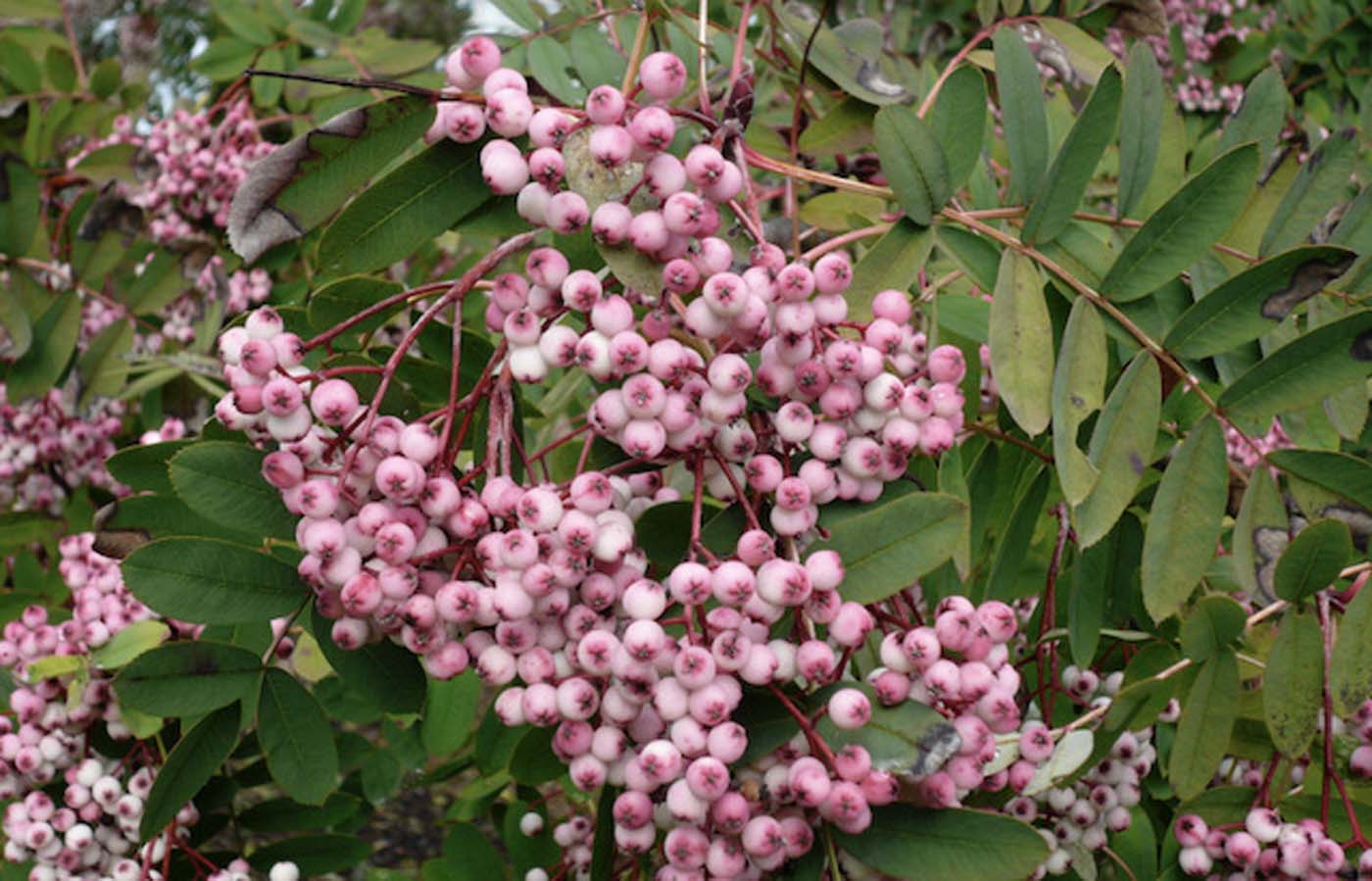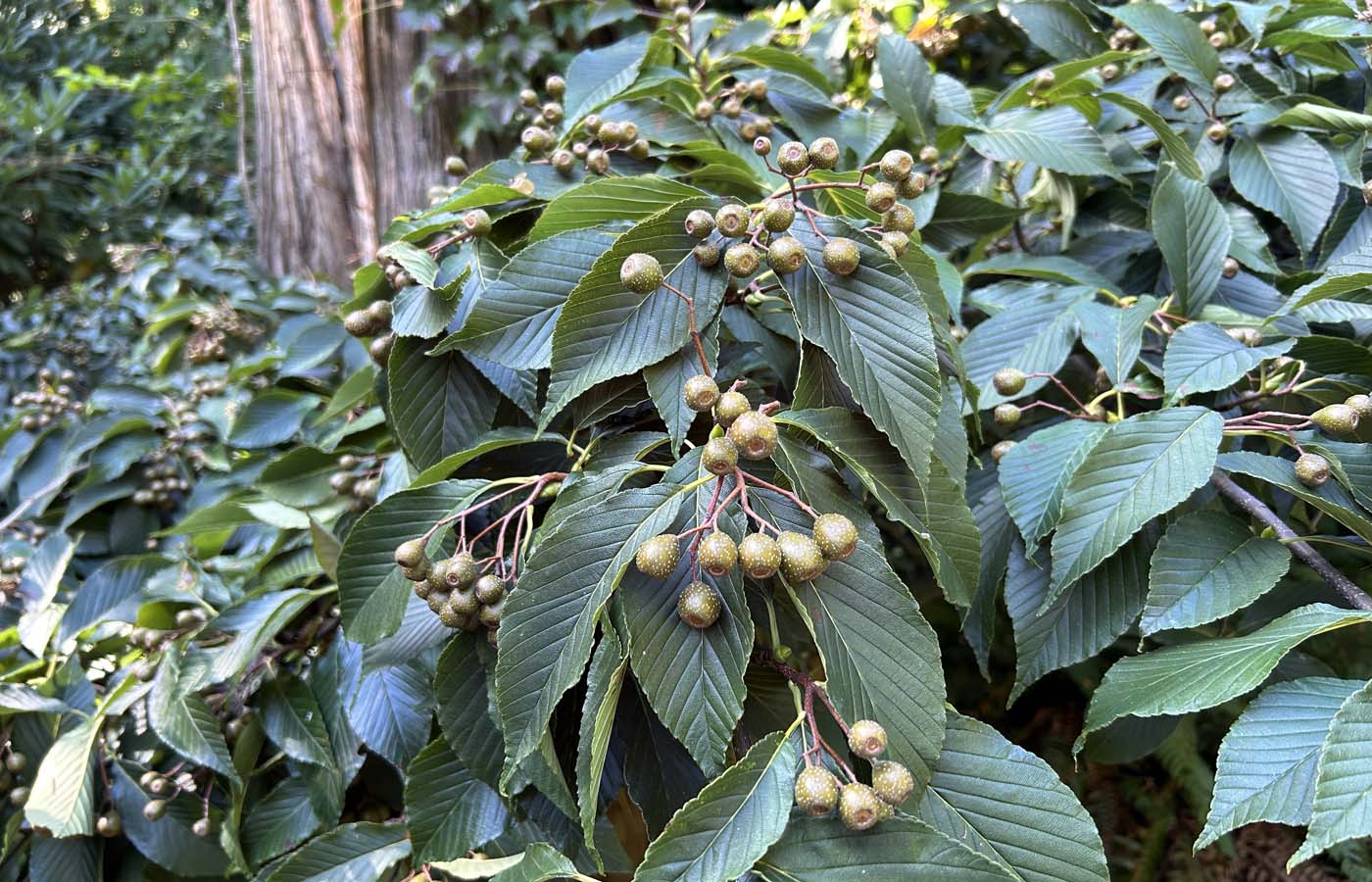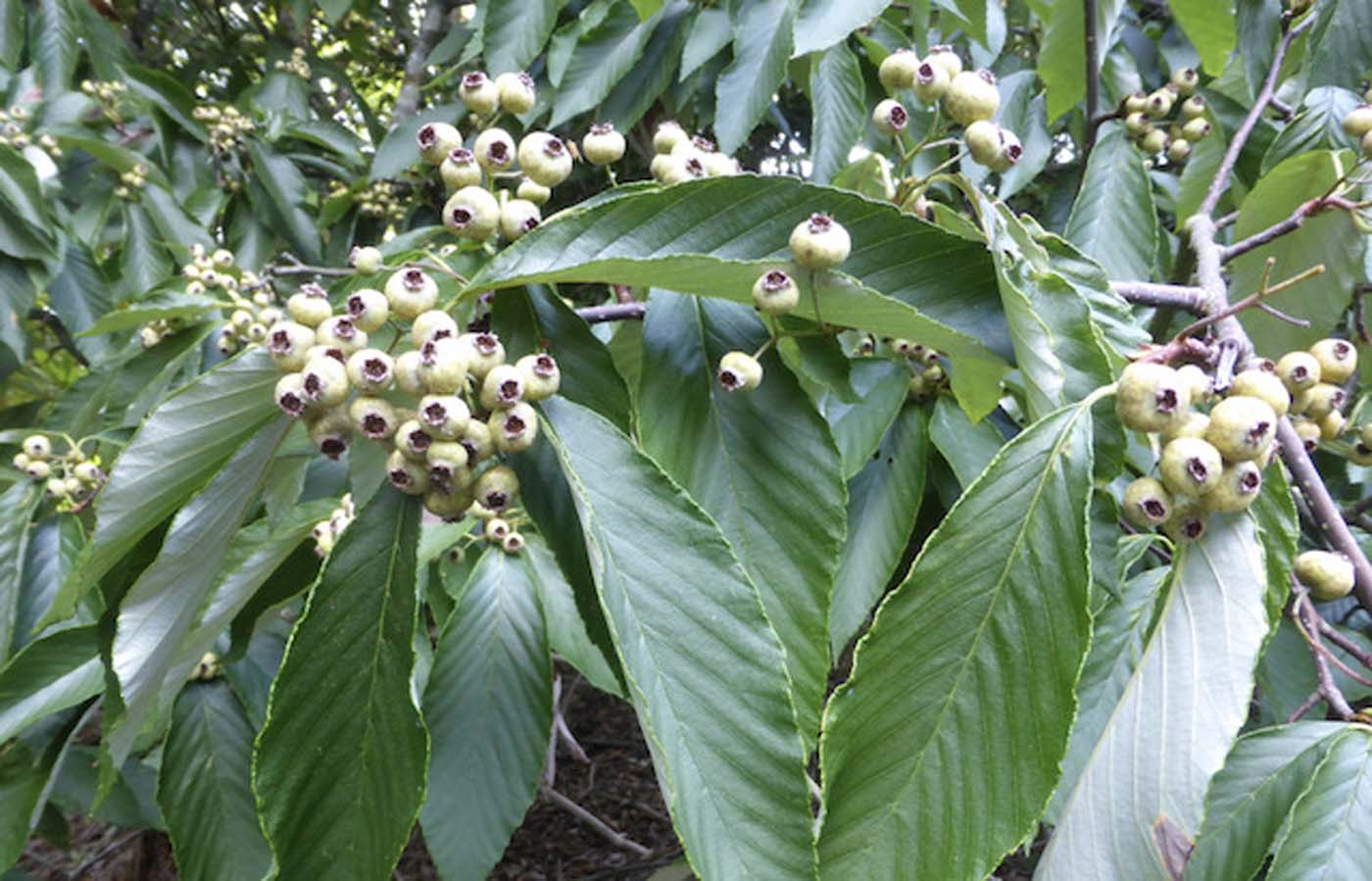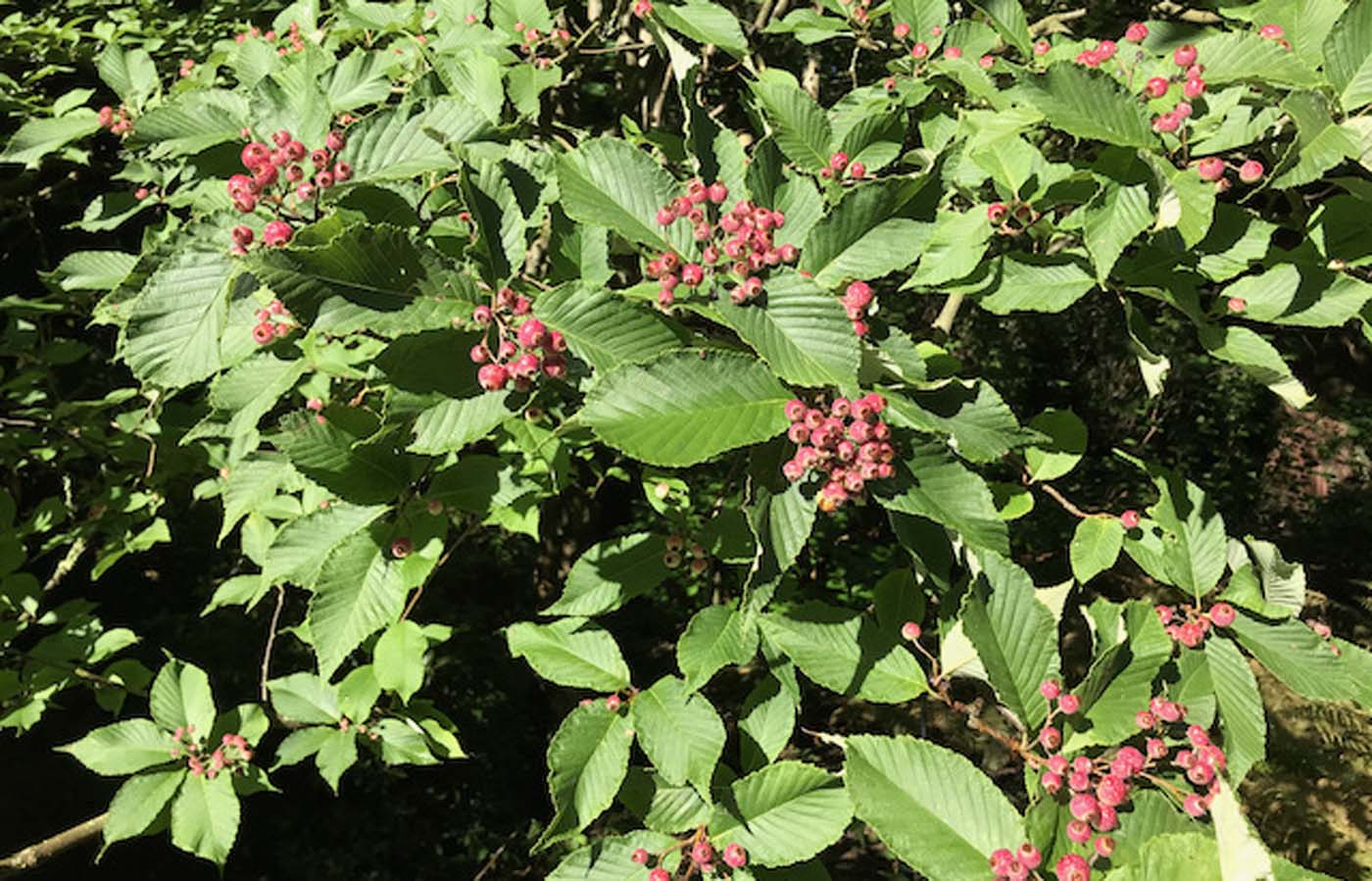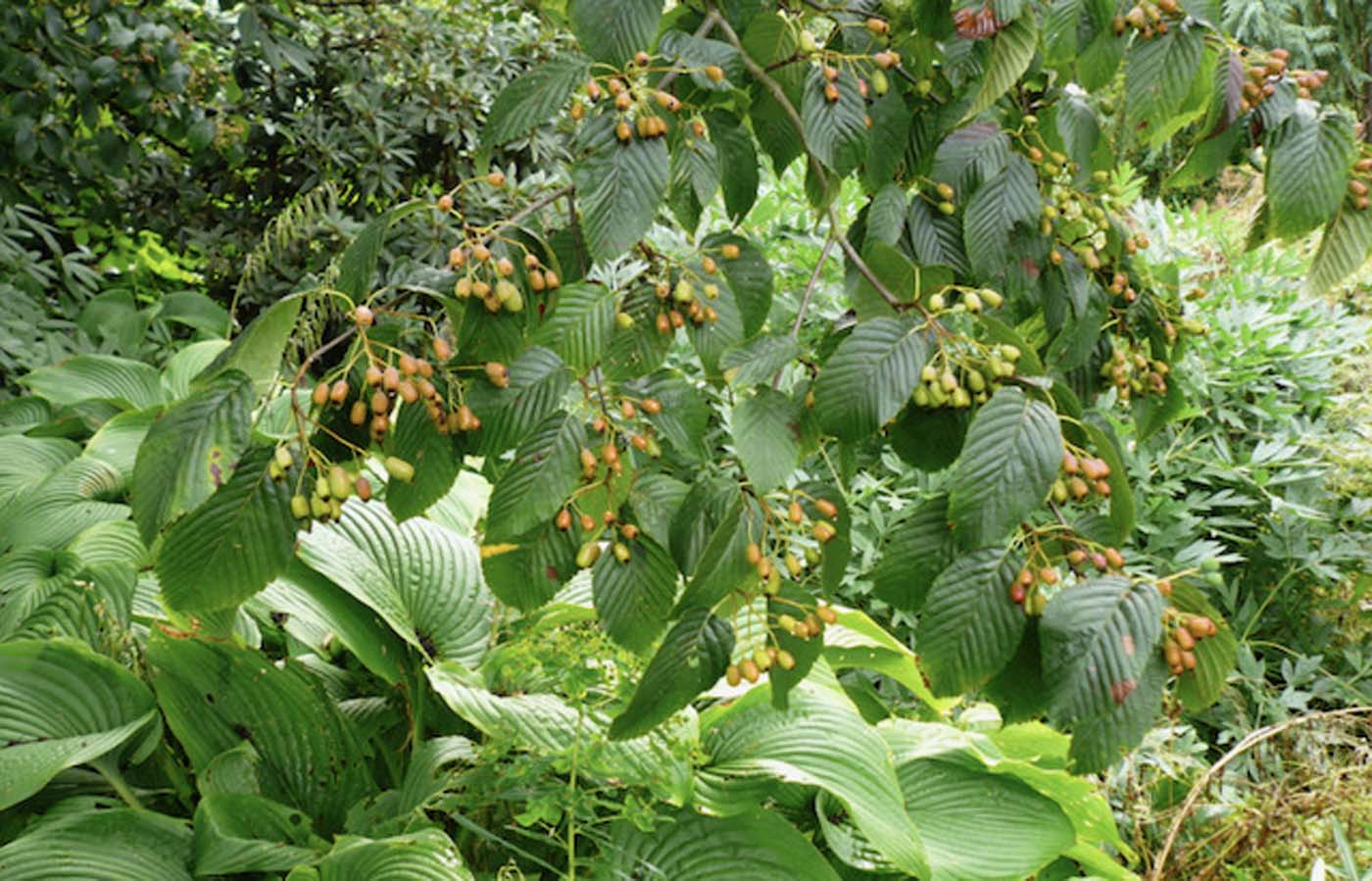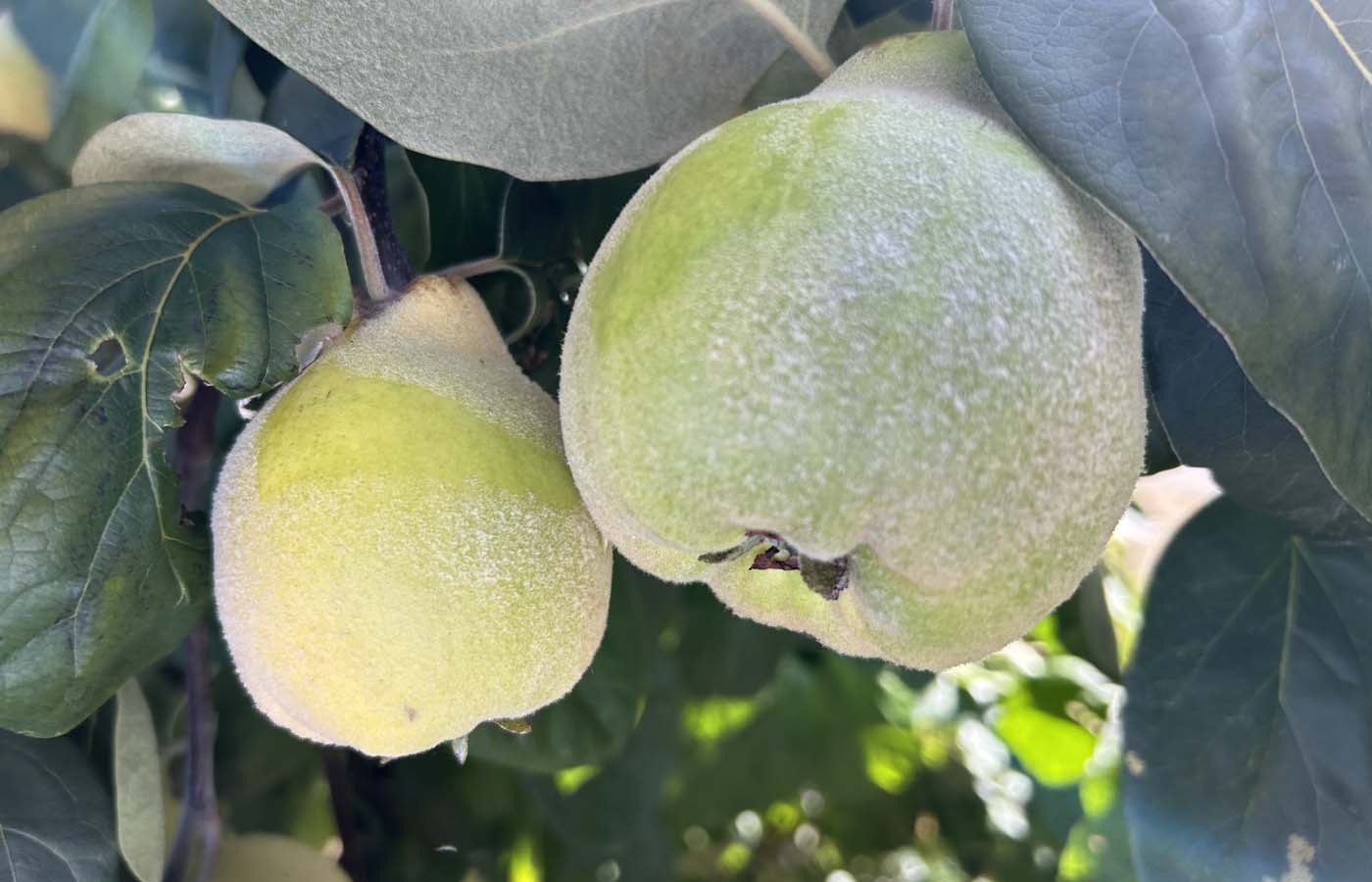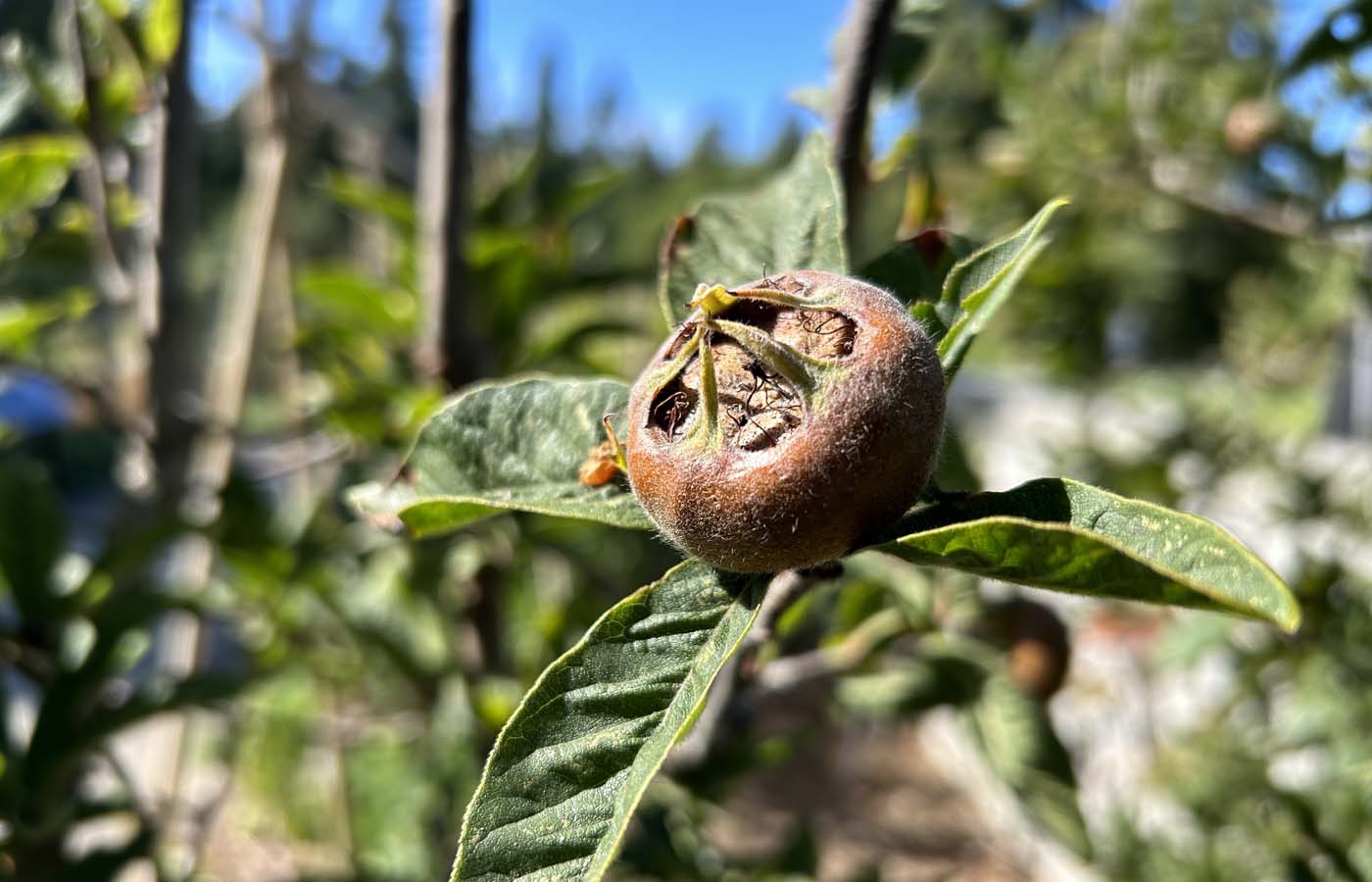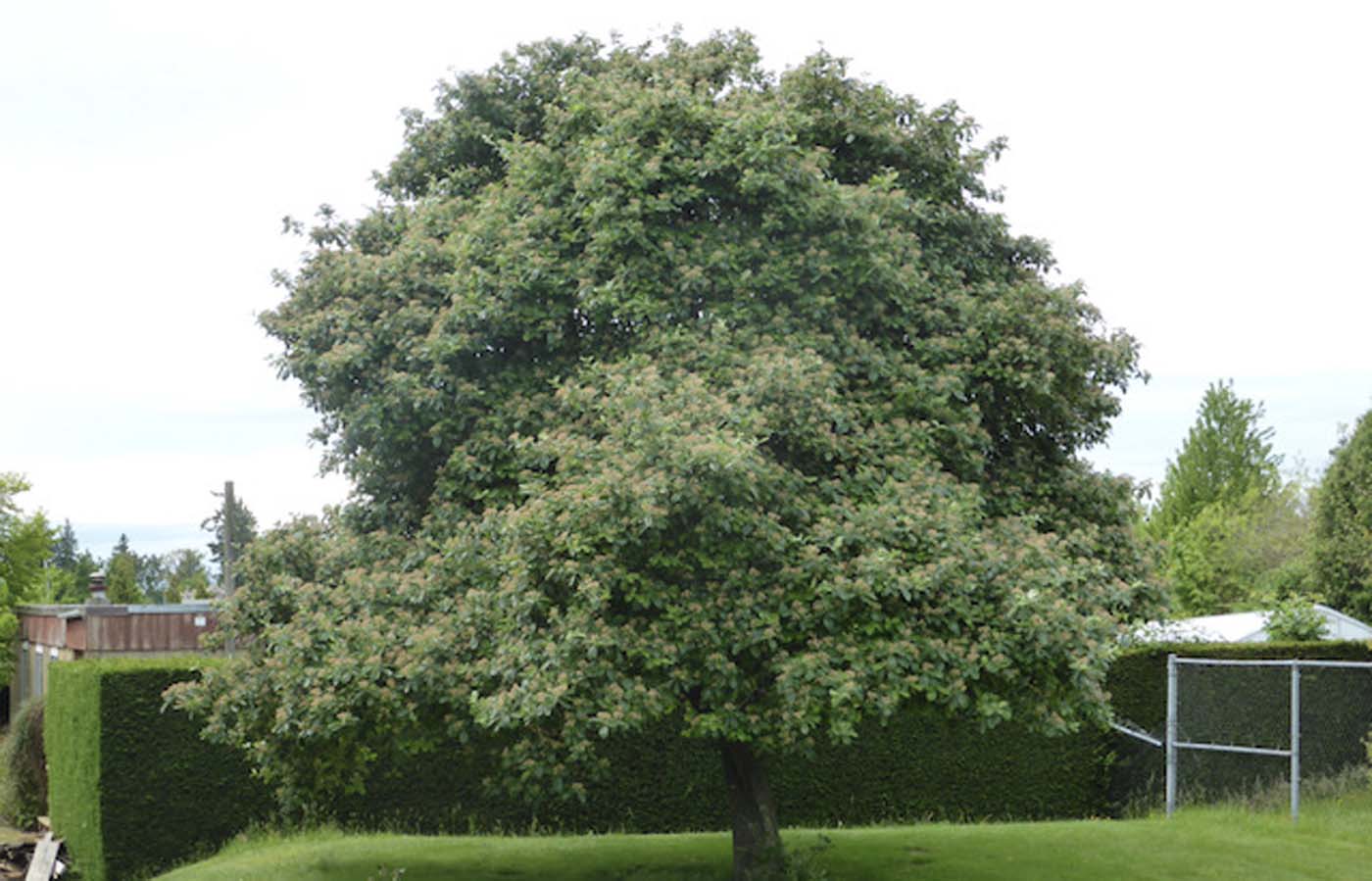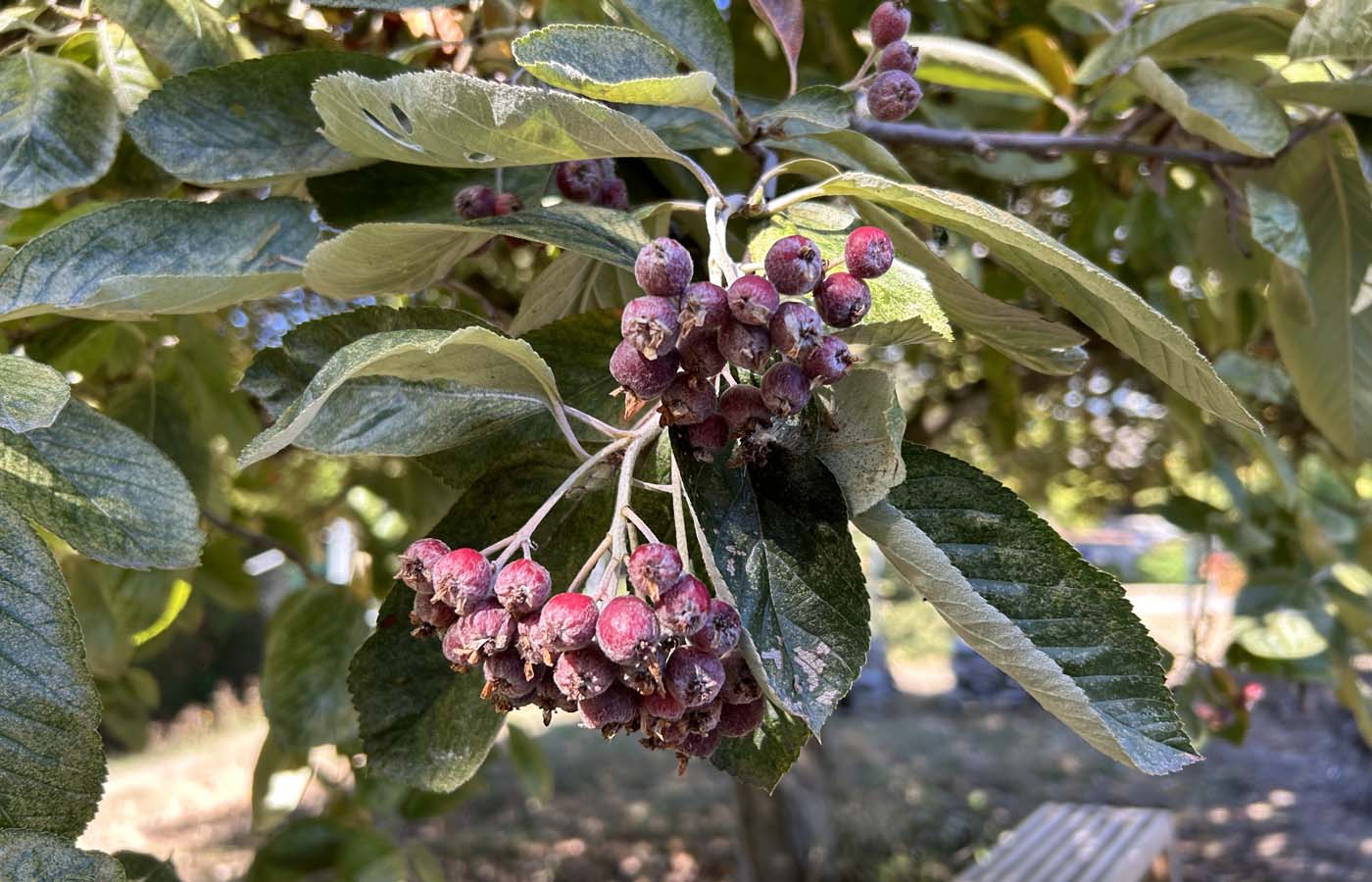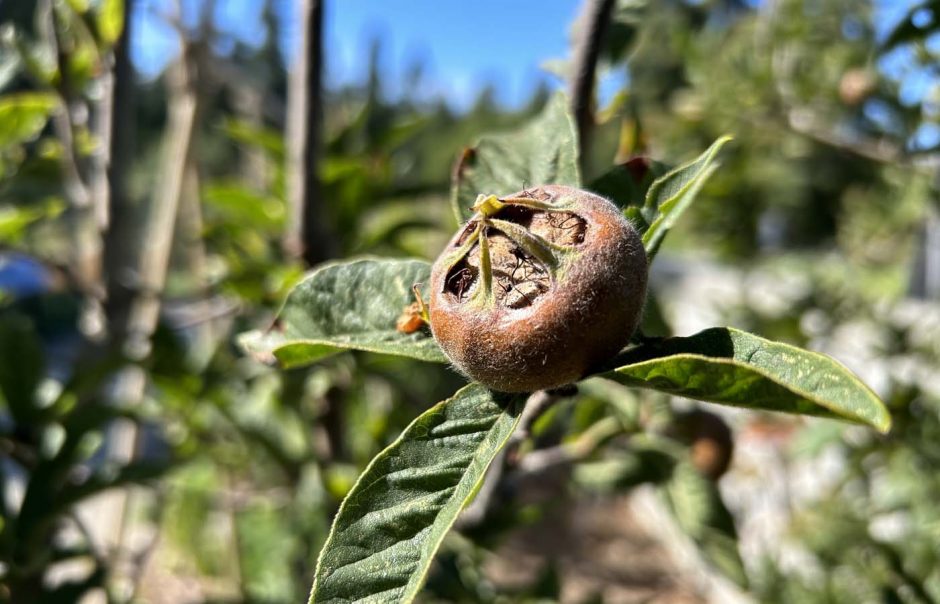
Mespilus germanica
As I’ve indicated numerous times in this blog, October is often the best month to see berries and other colourful fruits in the Botanical Garden. The mountain ashes and whitebeams, formerly all Sorbus species (but now considered, for the most part, Sorbus and Aria, respectively), are front and centre in showing off their beautiful berries. Technically, these are not berries at all, but pomes—like apples and pears—the most obvious difference between a pome and a true berry being the inner “core” that surrounds the seeds in a pome. In the past I’ve highlighted some of the more colourful Sorbus and their close relatives, including Scandosorbus and Hedlundia, for example. This time, I want to focus on the less colourful, but no-less-interesting Sorbus relatives. That said, I should point out that the pink-fruited Hubei mountain ash, Sorbus pseudohupehensis (just west of the Roseline Sturdy Amphitheatre), is putting on a not-to-be-missed performance this year.
While the more familiar mountain ashes have feather-like (i.e., pinnate) leaves with oval leaflets that are arranged at right angles to a central leaf stalk, and usually, small, glossy pomes, the whitebeams have simple, toothed leaves, much like those of an apple or an alder. There is a greater diversity of pome shapes in Aria (from globose to lozenge shaped), but their colours are often tempered by russetting (the appearance of tiny, roughened markings on the skin). Among the most remarked upon of these is Aria caloneura (beautiful leaved whitebeam), which reliably displays its bronzed, marble-like pomes in plentiful clusters through the autumn. Its scientific name derives from its remarkable leaves, which are marked by regular pinnate veins (calo = beautiful + neuro = vein), and that emerge a startling bronze-red in the spring. Our best example is the low-slung specimen on Lower Asian Way near Farrer Trail.
We have a number of larger-growing whitebeams in the collection. Aria hemsleyi (Hemsley’s whitebeam), our largest, produces substantial, silver-backed leaves and big clusters of small, yellow, russeted pomes. The specimen on Maries Trail near Staunton Trail shows its bountiful fruits close to the ground for easy observation. Close by on the west side of Upper Asian Way near Staunton is Aria pallescens (apple-fruited whitebeam). This tree produces a narrow-upright crown and beautiful little pomes that burnish apple-red where exposed to the sun. A third large species is Aria yuana (Yu’s whitebeam), which has lozenge-shaped pomes that are pink-red when fully ripened. A large individual can be seen above Upper Asian Way close to the entrance to the David C. Lam Asian Garden. It has to be said that the genetics of this group (i.e., apples and their relatives) is rather mixed up, which has led to much confusion about how they all fit together. Watch this space: names may change!
It’s worth mentioning that the European quince Cydonia oblonga (on the south slope above the Food Garden) fits into this group, as well. Quinces are known for their large yellow apple- or pear-shaped pomes that are covered in a mat of fluffy, floccose (easily rubbed off) hairs. Our tree is absolutely laden with fruit this year. At the back end of the Food Garden, behind the Taylor Plaza is yet another apple relative: Mespilus germanica (medlar), whose strange brown pomes only become palatable after “bletting” (exposure to freezing temperatures, which allows enzymes to convert the starches in the flesh to sugars).
One of the hallmarks of genetic instability in apples, pears, whitebeams, and mountain ash and their relatives (i.e., the pome-fruited group) is a tendency to make hybrids between what would seem to be distantly related species. The rarely cultivated x Sorbaronia alpina, for example, has spontaneously arisen in gardens where the American Aronia arbutifolia (red chokeberry) and Aria edulis (European whitebeam) are growing in proximity. Such bi-generic hybrids are good examples of the “reproductive fluidity” exhibited by the pome-fruited group. You will find an impressive specimen north of the Amphitheatre, next to the Horticulture Training Program’s “sandbox.”
Finally, there are many more autumn fruiting plants that aren’t apple relatives worth seeking out in the Botanical Garden this month. Don’t miss the spectacular orange-berried Celastrus scandens (American bittersweet vine) on the fence at the west end of the Carolinian Forest Garden, the nubbly-orange berries on Arbutus menziesii (Pacific madrone) opposite the Food Garden, and the fleshy, metallic blue pods on Decaisnea insignis (dead-man’s fingers) in various locations in the Asian Garden.
- Sorbus pseudohupehensis
- Arbutus menziesii
- Aria caloneura
- Aria hemsleyi
- Aria pallescens
- Aria yuana
- Celastrus scandens
- Cydonia oblonga
- Cydonia oblonga
- Decaisnea insignis
- Mespilus germanica
- Sorbaronia alpina
- Sorbaronia alpina
Submitted by: Douglas Justice, Associate Director, Horticulture and Collections

